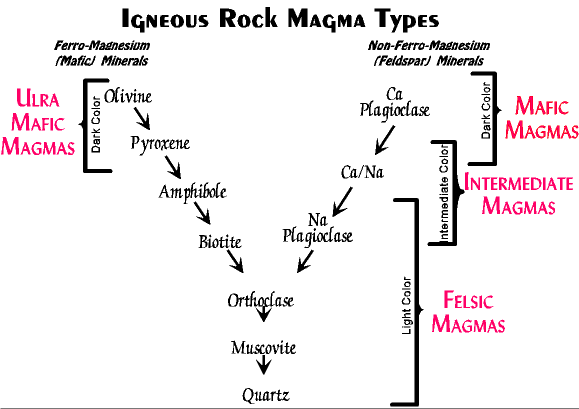|
Magma Types
Igneous rocks come in four basic varieties, ultramafic, mafic, intermediate, and felsic (red text is clickable to samples). These rocks are each composed of different suites of minerals, and are derived from magmas and lavas which have different properties.Furthermore, each of these magma types (and their rocks) tend to be generated and located in specific places on the earth. Or in terms of geologic processes, each magma type is generated by a specific set of tectonic processes. The minerals found in the rocks of each magma type can be related to Bowen's Reaction Series. BRS shows the relationship among the 8 rock forming minerals (see below). For example, minerals at the top of the series tend to be iron and magnesium rich, low in silica, very hot, and produce dark colored minerals, such a pyroxene, amphibole, and Ca plagioclase. Minerals from the bottom of BRS tend to be rich is sodium and potassium, high in silica, cooler in temperature, and produce light colored minerals, such as Na plagioclase, orthoclase, and quartz. |
 |